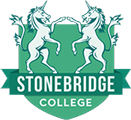Competition and Change (Byte Size Skills Course).
Competition and Change (Byte Size Skills Course)
The changing nature of the general business environment offers organisations both opportunities and threats. We can identify key drivers for specific organisations within this environment. The monitoring of the environment is a key activity for all businesses. We need to look at the competition and what is happening in the competitive environment, the environment that is closest to the organisation and has the most immediate impact on it. Once we have analysed the competitive environment, we need to develop strategies, and then formulate and implement actions to put the strategy into practice. This will require change, so we look briefly at some of the factors concerned with successful change in an organisation.
Stakeholders are the customers, suppliers, employees, owners, shareholders, pressure and consumer groups, regulators, professional organisations, competitors and any individual or organisation that has an interest in what an organisation does and how it does it. Some of these groups, such as consumer and pressure groups, are part of what we term the business environment. Some stakeholders such as employees are part of the organisation but, as customers, shareholders, members of pressure groups and members of professional organisations, they are also part of the competitive environment. So, not only are the boundaries between the business and competitive environment blurred, but these influential stakeholders also blur the boundaries between the organisation and the competitive environment. Therefore, before we look in depth at the competitive environment and how the organisation can respond to changes in it, we need to investigate stakeholders in more detail as they affect what the organisation is and what it does, and how it responds to the opportunities and threats in the business and the competitive environment.
We usually view the organisation as discrete and distinct from its environment. However, the precise boundaries of the organisation flex and change at the interface between the organisation and its environment. This occurs as the requirements of the organisation, the interests of the people of influence in the organisation and the shape of the environment changes. We use Porter's five forces model to analyse an organisation's immediate environment, its industry, and the activities of the organisation's competitors in the industry. We identify some responses the organisation can make.
We look at the sources of environmental information. We need to select and use appropriate information from the vast amounts of available data. We analyse an organisation's competitive and general environments, identify what we need to do with this information and see how the organisation responds to subsequent changes. This leads into an overall discussion of the nature of change in an organisation.
In the final section, we look at the way that business has been changing over recent years and identify some current trends that may provide direction for the future. In today's competitive world, the concept of competitive advantage needs to become an integral part of the culture of an organisation; one that manifests itself in the structure and in all functions. Success is achieved by efficiency in all business functions, in good overall co-ordination within the organisation and by effectiveness in achieving the mission and corporate objectives.
After participating in this course, you should be able to:
- identify stakeholders, evaluate the impact of stakeholder power and identify areas of conflict
- analyse Porter's five competitive forces for an organisation in its industry
- identify sources of environmental information appropriate for a range of organisations
- conduct a full environmental analysis for any given organisation
- evaluate the environmental factors driving change
- appraise why organisations need to manage change
- describe some sources of resistance to change
- summarise the key trends in the business world and their implications for an organisation.
On completion of your course, you will receive a certificate:
Stonebridge Associated Colleges: Competition and Change (Byte Size Skills Course) Certificate
Competition and Change (Byte Size Skills Course) Certificate issued by Stonebridge Associated Colleges, to view a sample of the college’s award, please click here.
Professional Membership
On completion of this course you will be eligible to join the following Professional Associations(s):
On successful completion of your course your qualification is awarded. You will receive an attractively presented Diploma or Certificate issued by Stonebridge Associated Colleges, this will also allow you to use the letters SAC. Dip. or SAC. Cert. after your name.
Stonebridge Associated Colleges is one of the leading (and biggest) distance education colleges in the U.K and internationally. We have many thousands of students studying with us at any one time from locations all over the world. Our diplomas will always count towards your future, and will improve your prospects of future employment or higher level study etc. by proving that you have studied to a certain level, that you have proficiency in your chosen subjects and that you are interested in your field of choice. Education is always an investment in your future and you will find this to be the case with our qualifications in your jurisdiction.
There is no experience or previous qualifications required for enrolment on this course. It is available to all students, of all academic backgrounds.
All course fees, inclusive of all payment plans including our Premium Credit Limited option, must be settled before certification can be ordered.
*You will have access to the course for 24 months.
Introduction
Objectives
Section 1: Stakeholders
Introduction
1.1 Who and what are stakeholders?
1.2 Conflicting interests
1.3 Stakeholder power
Summary
Section 2: Market Forces
Introduction
2.1 Industry life cycle
2.2 Porter's five forces
Summary
Section 3: Conducting an Environmental Analysis
Introduction
3.1 Monitoring the environment
3.2 Using environmental information
Summary
Section 4: Change and Competitive Advantage
Introduction
4.1 Responding to the PEST environment
4.2 Responding to the competitive environment
4.3 Implementing change
4.4 Future trends
Course Review Activity
Course Summary
References
Recommended Reading
Tutor-marked Question Paper
Assessment Method
After each lesson there will be a question paper, which needs to be completed and submitted to your personal tutor for marking. This method of continual assessment ensures that your personal tutor can consistently monitor your progress and provide you with assistance throughout the duration of the course.
What's Included
- All study materials
- Study Guide
- Full Tutor and Admin support
What's Included
- All study materials
- Study Guide
- Full Tutor and Admin support
The changing nature of the general business environment offers organisations both opportunities and threats. We can identify key drivers for specific organisations within this environment. The monitoring of the environment is a key activity for all businesses. We need to look at the competition and what is happening in the competitive environment, the environment that is closest to the organisation and has the most immediate impact on it. Once we have analysed the competitive environment, we need to develop strategies, and then formulate and implement actions to put the strategy into practice. This will require change, so we look briefly at some of the factors concerned with successful change in an organisation.
Stakeholders are the customers, suppliers, employees, owners, shareholders, pressure and consumer groups, regulators, professional organisations, competitors and any individual or organisation that has an interest in what an organisation does and how it does it. Some of these groups, such as consumer and pressure groups, are part of what we term the business environment. Some stakeholders such as employees are part of the organisation but, as customers, shareholders, members of pressure groups and members of professional organisations, they are also part of the competitive environment. So, not only are the boundaries between the business and competitive environment blurred, but these influential stakeholders also blur the boundaries between the organisation and the competitive environment. Therefore, before we look in depth at the competitive environment and how the organisation can respond to changes in it, we need to investigate stakeholders in more detail as they affect what the organisation is and what it does, and how it responds to the opportunities and threats in the business and the competitive environment.
We usually view the organisation as discrete and distinct from its environment. However, the precise boundaries of the organisation flex and change at the interface between the organisation and its environment. This occurs as the requirements of the organisation, the interests of the people of influence in the organisation and the shape of the environment changes. We use Porter's five forces model to analyse an organisation's immediate environment, its industry, and the activities of the organisation's competitors in the industry. We identify some responses the organisation can make.
We look at the sources of environmental information. We need to select and use appropriate information from the vast amounts of available data. We analyse an organisation's competitive and general environments, identify what we need to do with this information and see how the organisation responds to subsequent changes. This leads into an overall discussion of the nature of change in an organisation.
In the final section, we look at the way that business has been changing over recent years and identify some current trends that may provide direction for the future. In today's competitive world, the concept of competitive advantage needs to become an integral part of the culture of an organisation; one that manifests itself in the structure and in all functions. Success is achieved by efficiency in all business functions, in good overall co-ordination within the organisation and by effectiveness in achieving the mission and corporate objectives.
After participating in this course, you should be able to:
- identify stakeholders, evaluate the impact of stakeholder power and identify areas of conflict
- analyse Porter's five competitive forces for an organisation in its industry
- identify sources of environmental information appropriate for a range of organisations
- conduct a full environmental analysis for any given organisation
- evaluate the environmental factors driving change
- appraise why organisations need to manage change
- describe some sources of resistance to change
- summarise the key trends in the business world and their implications for an organisation.
On completion of your course, you will receive a certificate:
Stonebridge Associated Colleges: Competition and Change (Byte Size Skills Course) Certificate
Competition and Change (Byte Size Skills Course) Certificate issued by Stonebridge Associated Colleges, to view a sample of the college’s award, please click here.
Professional Membership
On completion of this course you will be eligible to join the following Professional Associations(s):
On successful completion of your course your qualification is awarded. You will receive an attractively presented Diploma or Certificate issued by Stonebridge Associated Colleges, this will also allow you to use the letters SAC. Dip. or SAC. Cert. after your name.
Stonebridge Associated Colleges is one of the leading (and biggest) distance education colleges in the U.K and internationally. We have many thousands of students studying with us at any one time from locations all over the world. Our diplomas will always count towards your future, and will improve your prospects of future employment or higher level study etc. by proving that you have studied to a certain level, that you have proficiency in your chosen subjects and that you are interested in your field of choice. Education is always an investment in your future and you will find this to be the case with our qualifications in your jurisdiction.
Introduction
Objectives
Section 1: Stakeholders
Introduction
1.1 Who and what are stakeholders?
1.2 Conflicting interests
1.3 Stakeholder power
Summary
Section 2: Market Forces
Introduction
2.1 Industry life cycle
2.2 Porter's five forces
Summary
Section 3: Conducting an Environmental Analysis
Introduction
3.1 Monitoring the environment
3.2 Using environmental information
Summary
Section 4: Change and Competitive Advantage
Introduction
4.1 Responding to the PEST environment
4.2 Responding to the competitive environment
4.3 Implementing change
4.4 Future trends
Course Review Activity
Course Summary
References
Recommended Reading
Tutor-marked Question Paper
Assessment Method
After each lesson there will be a question paper, which needs to be completed and submitted to your personal tutor for marking. This method of continual assessment ensures that your personal tutor can consistently monitor your progress and provide you with assistance throughout the duration of the course.
What's Included
- All study materials
- Study Guide
- Full Tutor and Admin support
What's Included
- All study materials
- Study Guide
- Full Tutor and Admin support
Our Advisors.
Our team of course advisors are keen to help.
Call us now on 0121 392 8288
Alternatively, please complete the form below and we’ll get back to you as soon as possible.
80,000 learners.
650 courses.
flexible payment
options.
Our student support team is here for you.























